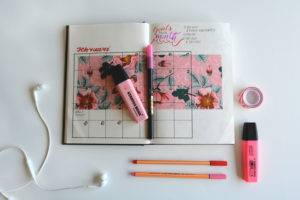7 Ways To Get Back Into The Habit of Living
You’ve earned the right to do the bare minimum for the remainder of your life. After all, you’ve been thrown the ultimate curveball. Whether anyone understands it or not, you’re tired and you just don’t care about outside expectations anymore. If anyone asks why you’re not getting back out there, all you have to do is pull out your W-card and let the awkward silence do the rest of the talking for you.
I’m reminded of a movie quote from Holly, the young new widow in P.S. I love you:
“Do you think it’ll be alright if I stop my life right here? Become the Miss Havisham of the Lower East side…never leave my apartment till I’m old…sit in my wedding dress, with an old piece of wedding cake…?”
Sounds good to me. I spent my fair share of time sitting on my couch in my wedding dress, absolutely O.K. that the world was passing me by.
That type of grief behavior suited me at the time – and was warranted. You process any way you need to process.
Eventually, life smacked me back in the face of reality and I realized I wanted to “get back out there” but had forgotten how. I felt like I had suffered an emotional stroke coupled with widow-induced amnesia.
Through trial and error, I discovered a handful of ways to get back into the habit of living.
Here are my top seven:
1. Learn About Mirror Neurons And Try It Out!
My first go-to is going to require a bit of homework from you: do some research on mirror neurons and then apply what you learn.
To get you started, let’s talk about what they are. A simple Wikipedia definition describes mirror neurons as a type of brain cell that causes action within the mind. Think of it like this: when you perform an action, a neuron in your brain fires. When someone observes you performing that same action, their neuron likewise fires, and it’s as if that observer were performing this action themselves – the neurons are mirroring each other. It’s why you smile when someone smiles at you and why you can’t help but laugh when someone else laughs.
To see how this could benefit you getting back into the habit of living, watch this YouTube video about mirror neurons by NOVA scienceNOW: Mirror Neurons. Robert Krulwich discusses the saying “monkey see, monkey do” and likewise that “we see, we do”.
I talked about this concept in my previous post “Don’t Forget to Play”. While working at an elementary school I observed all the forms of play kids were enjoying. It had been a long time since I’d felt like doing anything fun, but watching them made me want to try out play. I realized my mirror neurons were firing. If a kid was jump roping, I wanted to jump rope too, and eventually, all that observance led to me “doing” and enjoying my own brand of play.
Could seeing get you to the doing? It worked for me. Whatever behavior you miss having in your life, find somewhere to observe that, whether it is through a friend, t.v. show, or out in public. Doing so is going to show you that you are capable of getting back into the habit of living and make the remaining six items on this list doable.
Let’s get those mirror neurons going right now, shall we? Take a look at the picture below of this adorable child. I dare you to hold back a smile:
It might take you a minute to actually get the smile out, but notice the urge building in your “smiling muscles” that want to mirror this!
2. Connect With Other Widows
I can’t stress this enough. Re-entry is difficult but attainable and these women are going to remind you about the spice of life and how to live it. I have met some incredible women who are further down the road than me that have helped me see what’s ahead and how to navigate my new life.
Allow yourself to reach out in person and online (you’re already off to a great start!). You will find support, advice, love and hugs from our lovely group of gals here on Hope for Widows! You can find their only women group here: Hope For Widows Private Facebook Group.
This link will direct you to send a Facebook friend request to their Foundation friend profile page – where they can easily screen, approve and then add you to the private group directly.
Also check out this Facebook group called Grieving Widows and Widowers.
3. The “Every Three” Rule
Say “yes” to invitations for sociality – every third time. Allow yourself two consecutive “no’s” that allow you to stay home, take cover and “do your thing” but when the third offer comes around, just say yes and go. Studies show that our social network is a major factor in how we bounce back (learn more from the University of Minnesota here).
This every three approach was my own invention, but it worked for me. It allowed me to honor my boundaries early on while choosing forward movement. See how it works for you!
4. Quit What Isn’t Working For You
In the words of my favorite yogi, Boho Beautiful: “Let go of what no longer serves you.” It’s surprising how some things, whether it be a routine, item, person, etc., can hold you back. Identify what isn’t working for you and just let it go. Doing so will make space for new experiences and life.
5. Create A New Daily Routine
You are living in a new frame of existence. I know you don’t want it, but it’s here – and not all of it is bad. Start with something small, such as a subtle change in your morning routine. Try the free New York Times mini crossword puzzle on your phone (available through the NY Times app) while sipping on your favorite morning beverage. It’s a short and simple way to add a little fun to your morning that also offers a cognitive boost to get you going!
6. Buy Or Borrow A Pet
The addition of a furry friend, and the responsibilities that come with it, can help get you back into the habit of living.
They need to be fed which means you will have to go to the store. Pets like to play which is sure to get you laughing and rolling around. Dogs want to be walked – and that’s going to get you outside, walking around your neighborhood or down to your neighborhood park for some frisbee.
You get the idea.
Have you ever noticed how animals seem to know when we are sad?
I’ve been lucky to have two spunky little cats that have followed me through my journey. Early in my grieving I caught on that every single time I cried (no understatement here) my cats sat down by me, did something funny that got me smiling or curled up in my lap and purred like crazy until I calmed down.
Speaking of purring, did you know that cats purr at a frequency between 25 and 150 Hertz which has been shown in studies to promote healing – and healing leads to an appetite for life! (check out this article from the Scientific American).
I also grew up with dogs so as part of my healing process I would occasionally borrow my sister’s dog and take her for walks downtown by our local farmer’s market. The fresh air along the waterfront and the feeling of being “out” with my fluffy friend helped immensely.
Consider how the companionship of a beloved pet can improve your quality of life! If you’re not ready for the full-on responsibility of a pet, ask friends and family if you can borrow theirs for a day or two. When you feel ready for a permanent addition to your home, check out your local animal shelter!
7. Join A Dance Studio
Grief makes this one hard but it can be done (work those mirror neurons!). I joined an adult ballet class in my second year of widowhood and it became the best investment I ever made into my grief healing.
If you’re internally laughing, thinking “there’s no way I will do that!”, let me just tell you that I am an introvert – and it wasn’t easy for me to get myself into a studio!
Initially, it took my mom reminding me of a long lost dream I needed to go after – and getting me in the door to register. (Shout out to my amazing mom!)
The class was designed for newbies with no previous dance experience and was open to all adults ages 21 and up – so no intimidation was necessary!
Ballet is a full brain and body workout. Learning the technique reconnected my mind and body and mitigated my grief in countless ways. Placing movements with the timing of music and constantly pushing off the ground gave me the control I needed to reclaim my mind and body (I look forward to writing about this in full through another post).
New friendships also made their way into my widowed world. We worked together to execute moves and forged trust bonds you would experience through a team sport.
It’s incredible how being part of something, relying on people and having to be accountable (you said you’d be there) helps get you back into living. I can definitely say that it was the ultimate rehabilitation in my emotional stroke – and I still dance today.
Call around to your local dance studios or check online through their websites to see if they offer adult ballet classes!
______
These are just a handful of tried and true ways that got me back into the habit of living. Try them out, create your own – most of all, just start experimenting!










